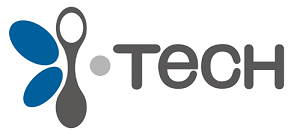The swift progress of technology is reshaping various aspects of our lives, including the realm of education. As the population of tech-savvy students grows, traditional lectures are becoming obsolete due to their perceived monotony and lack of interactivity. So, there’s a need for innovative and enthralling teaching methods to lure students for a long time while motivating them consistently.
Gamification is a blossoming concept that has widely gained acceptance in the education sector. This has led to massive technological advancements offered by an education app development company to integrate an e-learning app for an immersive learning experience. Be it rewards, competition, or interactive challenges, an e-learning app development company incorporates resourceful features to foster the excitement of students. This further enables them to understand the topic in-depth. As a powerful tool, gamification works effectively to harness the power of competitive spirit and curiosity of learners and thus encourage them to actively participate and collaborate to make their educational journey like never before.
So, before we discuss how gamification is useful in making learning fun and engaging, let’s dive into the basics.
What is Gamification?
Gamification is implementing game design elements such as competition, rewards, and interactive challenges, to non-game contexts, like education and business, to engage and motivate participants and achieve specific goals. It leverages the psychological appeal of games to make learning and tasks more enjoyable and effective. An education app development services provider gamifies the learning experience by embedding interactive features to make the learning experience outstanding.
Principles to Follow While Implementing Gamification in Education
1. Well-Defined Objectives
A clear objective is necessary for implementing gamification in education. All you need to do is find a clear learning objective and then align several game elements with the same theme. Meanwhile, you need to make sure that your education goal is never compromised with gamification.
2. Challenges and Competition
Introducing challenges and healthy competition is another crucial thing that you should implement to enhance interest and engagement. Meanwhile, the most crucial thing that you need to ensure is that competition should be fully constructive and not bore and discourage learners.
3. Motivation
Gamification should be able to boost the motivation of learners and thus motivate them to interact voluntarily since they find the activity fully satisfying and enjoyable.
4. Feedback
Feedback is indispensable. An ideal e-learning app should offer prompt feedback to learners regarding their performance in the activities they are most engaged in. It helps them analyze their performance and work continuously to improve their shortcomings.
5. Choice and Autonomy
Let learners enjoy some choices and autonomy within a fully gamified framework. It allows them to make the right decision and experience a complete sense of control.
6. Storytelling
You need to implement a storyline or a compelling narrative that entices learners to engage in an enjoyable learning process.
7. Scaffolding
Learners don’t always like an easy task. So, you should gradually increase the complication of tasks as learners progress, while ensuring they are fully challenged rather than being overwhelmed.
Top Advantages of Gamification in Education
1. Improved Engagement
Gamification provides an amazing and fully immersive learning experience that engages students naturally. With the help of a leadingeducation mobile app Development Company, educators can easily motivate students and also encourage their active participation in the course of their education journey.
2. Improve Problem-Solving Skills
Learning games encourage players to think critically and resolve complex issues in advance. If you integrate gaming elements into learning activities, students not only can memorize facts but can implement their knowledge actively even in real-world scenarios. It boosts problem-solving and critical-thinking skills.
3. Boost Retention
Retaining knowledge for a long time is something that is one of the key challenges in education. Gamification addresses this concern by ensuring that the learning process becomes highly memorable. When students emotionally engage in an interactive learning experience, they can easily remember information for a long time which drives great knowledge retention.
4. Quick Feedback
The users receive instant feedback, which is pivotal for the learning process. It lets students see various consequences of their actions, which enables them to make proper adjustments and improvements quickly. This kind of feedback enhances the learning curve.
5. Social Interaction and Collaboration
Learning games can encourage social interaction and collaboration. When you implement gamification in education, it promotes teamwork, cooperation, and communication among students. It not only improves their learning but also prepares them for the social dynamics of the real world.
6. Customized Learning Paths
Since every student prefers to learn at their own pace, traditional classroom programs can’t accommodate varying speeds of students. Gamified learning platforms tend to adapt based on the progress of individuals while providing them with various challenges and content to create challenges and support for every student.
Real-World Uses of Gamification in Education
1. Classcraft
As a top-notch classroom management platform, Classcraft made the best use of gamification to encourage positive behavior and also increase engagement. Students take certain roles like mages, warriors, healers, etc., to work together to earn rewards, and quests, and also avoid various penalties according to participation and behavior.
2. Duolingo
As one of the most sought-after language learning applications, Duolingo gamifies the entire process of learning a new language. Users grab opportunities to earn several rewards and points to complete lessons and practice them regularly. The interface of an application resembles a game with levels, progress bars, challenges, etc. It makes language learning more interesting.
Conclusion
Implementing gamification in education is one of the emerging trends that the majority of reputed education companies take into account these days. It has enormous potential to take learning to the next level by making it less monotonous and more interesting. You should approach a renowned education app development company if you also want to leverage the power of gamification.

